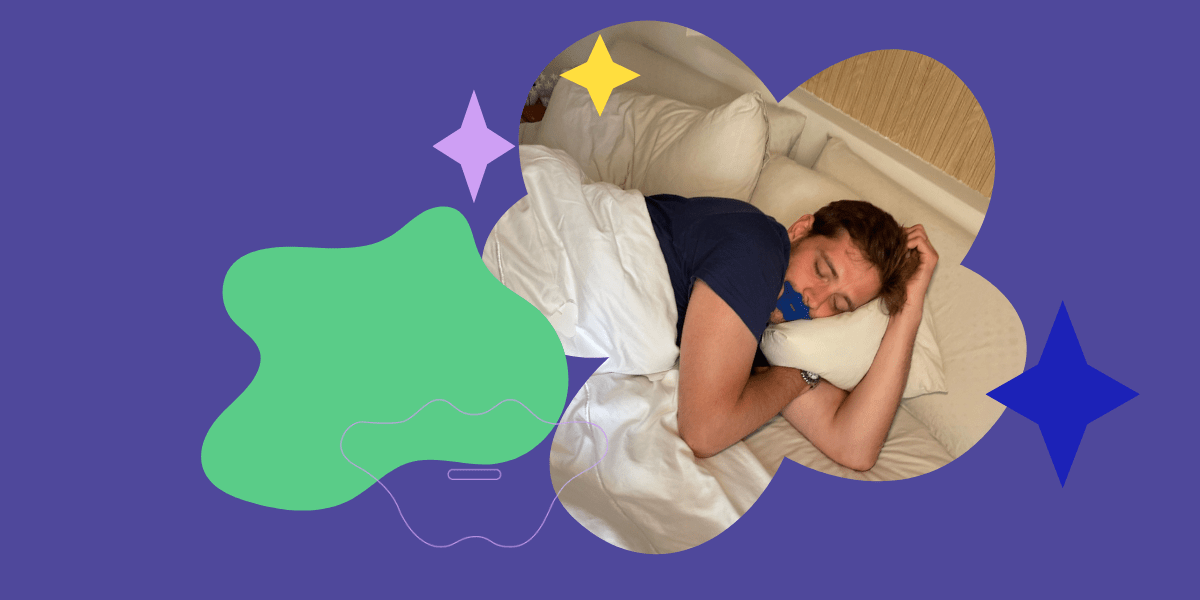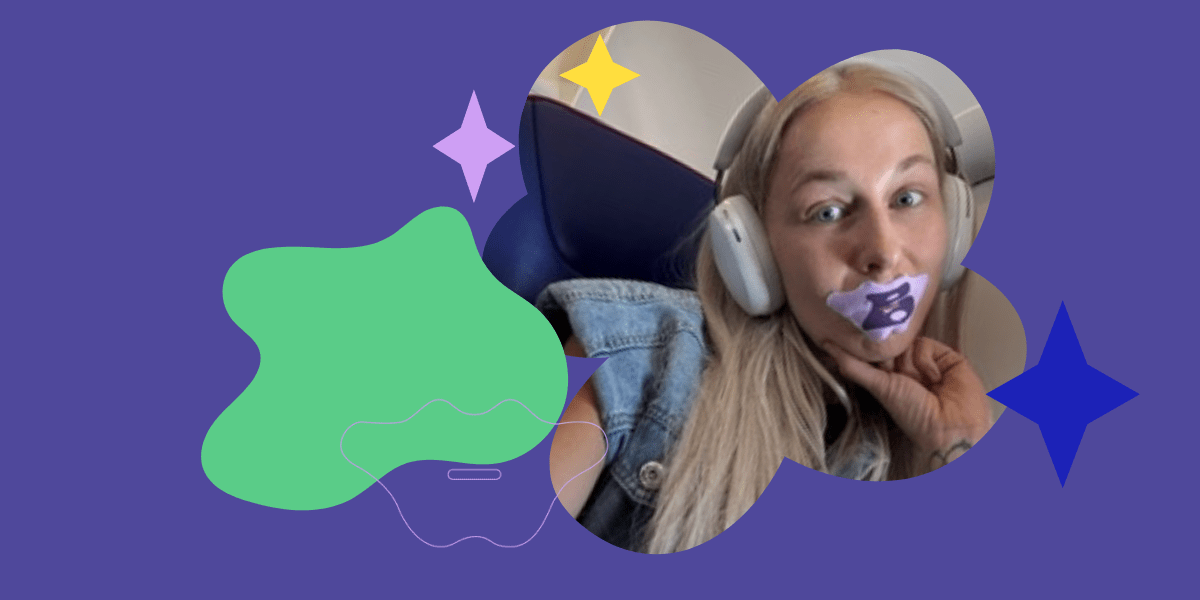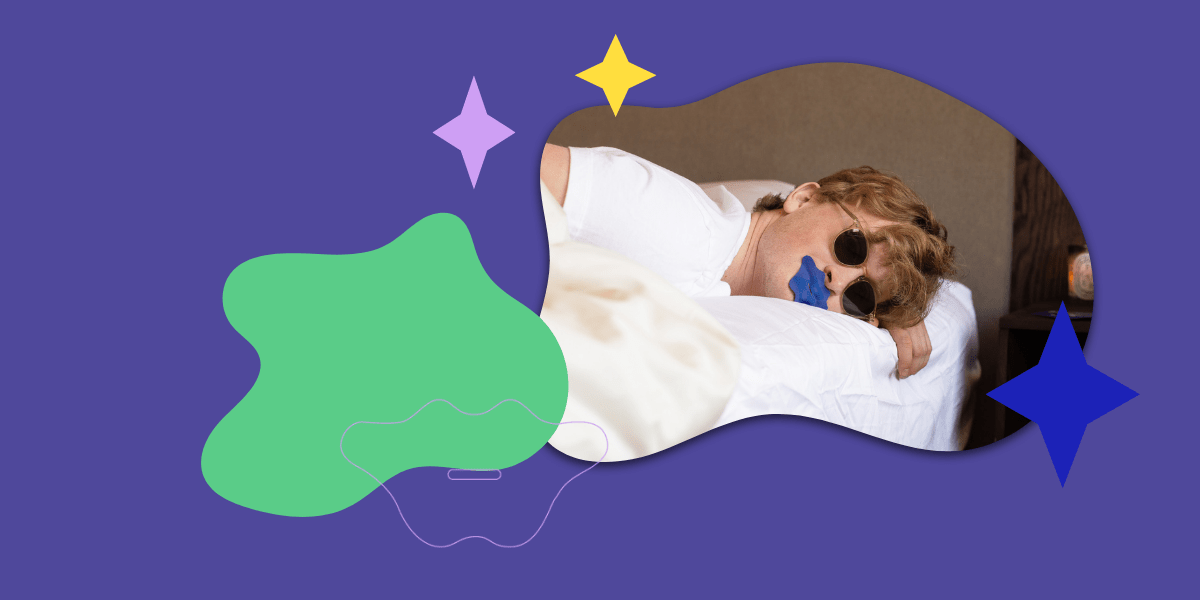How to Get Used to Mouth Taping

Intro
So — you want to start mouth taping.
You’ve heard the hype: better sleep, more energy, no more snoring.
But the idea of taping your mouth shut at night? Feels a bit much, right?
Totally normal. Here's how to ease into it — no stress, no pressure — just small steps that help your body adapt.
🛑 First things first: Is mouth taping safe?
✅ Yes — mouth taping is safe when done properly and with the right tape.
But it’s not for everyone.
Avoid mouth taping if you:
- Can’t breathe easily through your nose
- Have diagnosed sleep apnea
- Experience nausea or vomiting during the night
If you’re unsure, talk to your doctor first — especially if you have a breathing or sleep-related condition.
If you have irritated or broken skin around your mouth or react badly to adhesives, it’s best to wait until your skin barrier is healed. These issues are often temporary — but still a good reason to hold off.
1. Start Slow — During the Day or Evening
Don’t tape overnight right away. Instead:
- Wear your tape while relaxing in the evening — reading, journaling, watching a show
- Aim for 30–60 minutes to start
- Get used to nasal breathing while awake and fully in control
If you don’t feel comfortable, don’t tape directly. Let your body ease in.
2. Use the Right Tape — It Makes All the Difference
Not all mouth tape is created equal.
They differ in adhesive strength, size, breathability, flexibility, and comfort.
You want tape that’s designed specifically for mouth taping during sleep — not random medical tape or DIY hacks.
Look for tape that’s:
- Soft and skin-safe — gentle enough for nightly use
- Flexible — moves with your face and doesn’t restrict
- Secure but breathable — holds through the night but allows airflow
- Features a small central hole — this helps the body feel safer during the transition to nasal breathing
✨ Bedrock Mouth Tape is made for beginners and regular users alike — skin-friendly, silk-smooth, and designed with purpose.
3. Prep for Success: Keep It Clean
Before applying tape:
- Cleanse the area around your lips with a gentle cleanser or warm water
- Avoid thick balms or moisturizers near the application zone
- If you use skincare, let it absorb fully before taping
Clean skin = better hold and less risk of irritation.
4. Apply It Right — And Stay Comfortable
When you place the tape:
- It should feel snug but never restrictive
- You shouldn’t feel panicked, uneasy, or breathless
- If anything feels off, just remove it — and try again another night
Weird at first? Totally normal. But never force it.
5. Let Your Body Adjust — And Observe the Results
Give it 3–5 nights of consistent use. Most people find that:
- Their body starts defaulting to nasal breathing
- Sleep becomes deeper and more restorative
- Snoring decreases or disappears
- Dry mouth goes away
- Mornings feel clearer and calmer
If you track sleep, you may even notice longer deep sleep and more REM.
Final Note: It’s Not About Perfect. It’s About Progress.
You don’t need to get it right on night one.
Start slow. Use tape designed for the job. Prioritize comfort and consistency.
And let your breath — and sleep — start working for you.
How long does it take to get used to mouth taping?
For most people, the adjustment takes 3 to 5 nights of consistent use.
The first night might feel strange. By night two or three, your body starts adapting. After a week, it often feels like second nature.
That said — everyone’s different. Some feel the benefits on night one. Others need a slower ramp-up.
The key? Stay consistent, listen to your body, and give it a fair shot. You’ll know when it clicks.





Comments